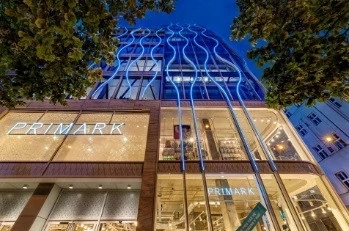Magic mirrors and virtual art: modern luxury goes digital
With increasingly demanding customers, luxury brands have to go the extra mile to provide digital experiences that add value, increase engagement and drive sales
Add bookmark
It is essential for luxury brands to modernize and leverage the accessibility and customer engagement offered by virtual experiences, but digital tools need to be in keeping with premium brand values. It is no longer enough for luxury brands to simply have a well-designed, attractive website.
Across all market sectors, the pressure is on to create customer-centric digital experiences that add value. For the luxury sector, digital touchpoints must mirror the high-end in-store experience to drive brand loyalty and increase revenue.
Gartner’s Luxury 2021 survey found that luxury brands spend an average of 33 percent of their advertising budget on digital marketing. This will remain a high priority, particularly for brands with generous budgets for influencer-based marketing to attract tech-savvy millennial and Gen Z consumers. A Bain & Company study found these groups will become the dominant luxury market demographic, with millennials estimated to make up 40 percent of this competitive and often fickle market by 2025.
With high expectations for digital experiences among the younger buyers, many luxury brands are going the extra mile with innovative digital interactions, seamlessly merging physical and virtual customer experiences.
Gucci's VR artistry
In 2018, Gucci leveraged virtual reality (VR) technology with social media marketing. The Gucci Hallucination VR feature was developed for in-store and online customers. Ignasi Monreal, a Spanish artist discovered via the #guccigram social media project, had his surreal artworks promoted in stores in window displays and big screen projections. In 52 outlets, shoppers enjoyed an in-store VR experience when they received collectible tickets with purchases.
Monreal’s works were also showcased as part of a digital activation project that connected to the Gucci app. Scannable images in newspapers and magazines took customers to 3D pages on the artworks enhanced with augmented reality effects.
Limited edition Monreal-designed T-shirts and sweatshirts sold out, with nine styles created and only 200 of each manufactured. It was an effective way to target younger consumers by creating demand via digital interactions.
Neiman Marcus' digital mirror
Another early adopter was US luxury fashion retailer Neiman Marcus, which pioneered a digital mirror in 2015. Debuting in a California store, the Memory Mirror takes photographs of outfits that customers try on, so they can view them side by side. It offers a 360-degree view so customers can see how outfits look from different angles, items can be viewed in different colors, and the images are shareable so customers can get the opinions of friends and family.
Since 2015, other high-end fashion retailers have taken Neiman Marcus’s lead, such as Browns in London’s prestigious Mayfair shopping district. Now owned by Farfetch, the retailer introduced interactive mirrors into the fitting rooms in 2021. Customers with a Browns online product wishlist can use the mirrors to view items, see how they can be styled, and receive information on available sizes and complementary products.
Browns has also introduced QR codes for the store’s jewelry designers, so shoppers can check in advance about product availability, including pieces that are not yet in stock. Click-to-buy links allow customers to check out in store or after they have left and have items home-delivered. The store’s app has a function that allows customers to virtually try on watches and trainers no matter where they are in the world.
Shangri-La on tour
Beyond retail, the luxury travel market offers opportunities for virtual experiences to drive sales. The Shangri-La Group offers hotel and destination tours that can be downloaded. Instead of a 2D video or static online image galleries, the brand offers 360-degree tours. While the videos can be viewed via the 360-degree video player Shangri-La provides online, a more immersive VR experience can be achieved by watching the videos via VR headsets that support the Oculus platform.
The 360-degree videos started as a marketing tool for travel agents, meeting planners and corporate clients in 2015, before becoming part of the hotel group’s broader digital experience. When the project launched, Steven Taylor, Shangri-La’s chief marketing officer said the brand was “investing significantly in technology and the future of travel content, which is why we are embracing virtual reality on this scale.”
Seven years on, this level of forward thinking has proved to be successful for so many luxury brands.
Get the latest CX resources straight to your inbox

Sign-up to the CX Network newsletter today to stay informed about new CX resources and industry updates.





















